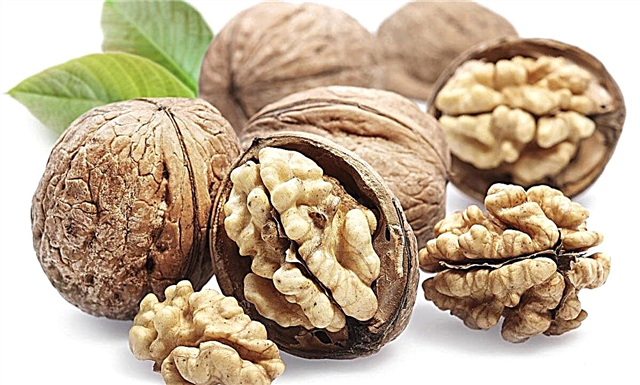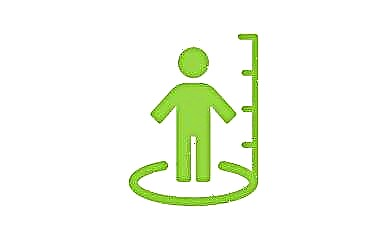A disease of almost any organ system can be manifested by vomiting in a child, especially at an early age, so this problem is relevant for all parents. Under the guise of this symptom, both mild functional disorders and serious pathologies can be hidden, and his future fate largely depends on how and when first aid is provided to the child. Therefore, parents must figure out how to stop vomiting in a child.
Causes of vomiting in a child
The most common causes of vomiting in children include the following conditions.
- Intestinal infections.
- Food toxicoinfections.
- Traumatic brain injury.
- Neuroinfection (meningitis, encephalitis and others).
- Intestinal obstruction and other surgical pathology (appendicitis, peritonitis, diverticulitis).
- Damage to the nervous system (tumors of the central nervous system, migraine).
- Poisoning, including drugs.
- Metabolic disorders (with neuro-arthritic diathesis, cyclic vomiting syndrome).
- Sunstroke and heatstroke.
- Bleeding from different parts of the gastrointestinal tract.
- As part of the intoxication syndrome in various pathologies (hyperthermia, otitis media, pneumonia, urinary tract infections, sepsis and others).
According to the frequency of occurrence of the reasons, there are some peculiarities depending on the age of the child. At the age of 1 year, the most frequent pathologies causing vomiting are atresia and stenosis of the esophagus, congenital pyloric stenosis or pylorospasm, intestinal infections, metabolic disorders (phenylketonuria, galactosemia, etc.), intussusception of the intestine, traumatic brain injury.
For infants, one of the common causes is melena or bloody vomiting with late hemorrhagic disease.
At the age of 6 years, intestinal infections, pathology of the gastrointestinal tract, poisoning of various etiologies (household, medicinal), neuroinfections are most often the culprits of vomiting in a child.
From 6 to 18 years old, intestinal infections, foodborne diseases, and injuries prevail. Poisoning, especially medicinal, does not lose its relevance at this age.
The mechanism of vomiting
Vomiting is the reflex expulsion of gastric contents through the mouth. The center responsible for the onset of vomiting is in the medulla oblongata. It receives signals from receptors in the stomach, intestines and other organs. The act of vomiting always occurs with a sharp contraction of the abdominal muscles and diaphragm.
Infectious causes
Infectious causes of vomiting can be divided into the following groups:
- intestinal infections;
- foodborne diseases (poisoning caused by bacteria and / or their toxins);
- neuroinfections (meningitis, meningoencephalitis, encephalitis, encephalomyelitis, etc.);
- manifestation of intoxication syndrome in various inflammatory diseases (acute otitis media, sinusitis, pneumonia, pyelonephritis and others).
Among intestinal infections, the most common pathogens are viruses (rotaviruses, noroviruses, adenoviruses, enteroviruses, calceviruses, etc.). However, there are also bacterial intestinal infections caused by salmonella, E. coli, staphylococci.
Also, one should not forget about pathogens such as helminths (roundworms, pinworms), protozoa (lamblia, amoeba). Taking into account the availability of travel anywhere in the world at the present time, one should remember about the danger of infection and especially dangerous infections such as cholera and tropical diseases. They can be extremely life-threatening for a child.
Pathogens that affect the nervous system of a child are also represented by viral and bacterial agents. The greatest danger is posed by bacterial pathogens (meningococci, Haemophilus influenzae, pneumococci, streptococci, listeria, borrelia).
Among viruses, there are enteroviruses, herpes simplex viruses type 1 and 2, varicella-zoster virus, Ebstein-Barr virus and others.

Central vomiting
One of the most dangerous types of vomiting is central or cerebral vomiting. How does it manifest itself? It is not preceded by nausea, after which the child does not get relief. There is no clear link between vomiting and food intake. With this variety, the child's condition does not improve after vomiting, but worsens markedly (lethargy increases).
What diseases may cause cerebral vomiting? These are neuroinfections (meningitis, encephalitis, etc.), brain tumors, traumatic brain injury, hydrocephalus, cerebral edema of various origins, etc.
All these pathologies are united by increased intracranial pressure, due to which a reaction in the form of vomiting develops as a compensation mechanism.
Vomiting classification
Depending on the mechanism of occurrence, the following classification of vomiting is distinguished:
- Central (cerebral vomiting), which is described above.
- Visceral:
- esophageal vomiting may be a symptom of atresia and stenosis of the esophagus, achalasia. Such vomiting occurs shortly after eating, it has no sour smell, and the composition is represented by undigested food;
- gastric vomiting occurs in intestinal infections, food toxicoinfections, acute and chronic pathology of the gastrointestinal tract (gastroduodenitis, gastric ulcer). This type of vomiting is characterized by a connection with food intake, a sour smell and, as a rule, an improvement in the child's condition after. She can be stubborn;
- intestinal vomiting more often associated with intestinal obstruction (intussusception, for example). Vomiting is persistent, there may be fecal odor, severe abdominal pain.
- Bloody vomit is always a reason for emergency hospitalization. It can be caused by bleeding from various parts of the gastrointestinal tract, Mallory-Weiss syndrome, and others. In children under 3 months of age, such vomiting may be a sign of late hemorrhagic disease. Impurities of blood in the vomit can have a different color (from bright scarlet to the color of coffee grounds), depending on the location of the bleeding.
For children in the first year of life, you need to understand what regurgitation looks like. It occurs without additional stress on the child, the general condition and behavior does not suffer at the same time.

When is it necessary to stop vomiting in children?
First aid should be provided to the child, regardless of the amount of vomiting. There are the following degrees of severity of vomiting.
- Easy - 1-2 episodes per day.
- Moderate - 3-7 times a day.
- Heavy (indomitable) - 10 or more times.
In addition, when assessing the severity of a child's condition, it is necessary to be guided by his general behavior, diuresis. Severe severity always implies inpatient care for the child.
When is hospitalization required?
The cases when you need to go to the hospital are as follows.
- Children of the first year of life (they can tolerate such conditions very hard).
- Children with concomitant chronic pathology and immunodeficiency conditions.
- If the child continues to vomit and show signs of dehydration.
- If the intestinal infection takes a protracted course.
- If there is an admixture of blood in the vomit.
- If the child has eaten a drug or drank a household chemical.
- If there is a suspicion of an intestinal infection, and you live in a dorm or together with food workers.
Vomiting does not stop
If the child's vomiting does not stop, drinking through the mouth is ineffective, the child is lethargic and he has signs of dehydration, then you must definitely go to the hospital.
The child's condition suffers
An important question for every parent is how to understand that the child's condition is suffering and it is imperative to consult a doctor and hospitalize the child? First of all, pay attention to the child's behavior. If he is inactive, lethargic, constantly sleeping, then these are signs of trouble.
Next, look for so-called signs of dehydration. What concerns them? This is dryness of mucous membranes and skin (lips), decreased urine output (the child urinates less and less often), thirst, the skin fold straightens slowly.

How can you help your child at home?
The most important thing in treating vomiting is watering the baby. Children are more prone to dehydration and toxicosis than adults, therefore it is extremely important that the volume of fluid lost with vomiting is replenished.
The main groups of drugs
Vomiting is a protective reaction of the digestive system to the ingress of toxic substances, infectious agents and their toxins. Therefore, it is very important to be careful about the use of antiemetic drugs, as they can harm the child.
What drugs are used for vomiting in children? Enterosorbents, antiemetic, oral saline solutions used for intestinal infections. In other cases, the treatment will differ depending on the cause that caused the vomiting, but they all have in common the need to replace the fluid lost with vomiting by either drinking through the mouth or infusion therapy.
Application antiemetic drugs (Motillium, Motillac, Ondansetron) is indicated only in case of persistent vomiting and should only be performed on the advice of a physician.
Among enterosorbents shows the use of drugs such as activated carbon, Smecta, Dimosmektit, Polysorb, Enterosgel and others in age dosages.
Probiotics have not shown in studies significant benefits in their use, especially in the acute period. Among all the drugs in this group, only those containing Saccharomyces boulardii and Lactobacillus rhamnosus GG have proven their effectiveness.

Prevention of dehydration
Prevention of dehydration and first aid for vomiting in a child is adequate drinking.
Drinking a child requires perseverance and patience from the parents!
It is important to remember that you should not give your child any liquid for 40 minutes - 1 hour, so as not to provoke another episode of vomiting!
You can not allow "hungry" pauses in the child. That is, it is imperative to feed the child.
Small children are best fed with a syringe (without a needle), a bottle with a teat, or a teaspoon.
Drinking must be fractional. That is, it is best to give 1 teaspoon of liquid every 3-5 minutes.
Symptomatic therapy for vomiting in children
Symptomatic therapy for vomiting in children is oral rehydration and the intake of enterosorbents. This is the main first aid for a child with vomiting. For oral rehydration, drugs such as Normohydron, Gastrolit, Oralit, Regidron, Humana Electrolyte, Orsol and others are used.
The volume of solution required for drinking depends on the weight of the child and his pathological losses with vomiting. At the initial stage, the child should receive approximately 50 ml / kg of solution in 8 hours. Then, if necessary, the volume is expanded.
What absolutely can not be done when vomiting in children?
It is categorically impossible to try to give the child any liquid immediately after vomiting.
It is categorically impossible to allow long hunger pauses in a child.
Drinking water will always be ineffective if it is carried out with exclusively clean water, without glucose and electrolytes.
It is categorically impossible to stay at home with a child if he is lethargic, inhibited, urinates a little, or there is blood in the vomit. An urgent hospitalization is required in these cases.
The relevance of alternative methods of treating vomiting in children
Traditional methods of treatment are inappropriate and unacceptable in childhood and, moreover, can be dangerous for the child!
How can you help a child at home? You can make your own glucose-saline solution for drinking your child. To do this, take 1 teaspoon of table salt, 8 teaspoons of sugar, ½ teaspoon of baking soda, 1 liter of boiled water and mix it all.
You can make the so-called potassium compote from dried fruits. Its advantage is that it is rich in electrolytes and is liked by children. To do this, 200 ml of compote needs 1 tablespoon of raisins, a handful of dry apples, 5-6 pieces of dried apricots, 1 teaspoon of sugar.
Also, in case of intestinal infections, until recently, it was proposed to use the drink "Coca-Cola" or "Pepsi" (from 5 years of age) for drinking. However, recent studies have shown that these drinks are too high in sugar and low in electrolytes, so they should not be used as an alternative to oral glucose-saline solutions.
Prevention of conditions that provoke vomiting in children
Prevention of conditions that provoke vomiting in children is as follows:
- Compliance with the rules of personal hygiene.
- Avoiding the use of expired food products or with a disturbed storage regime.
- Periodic processing of all toys used by the child.
- Timely vaccination of the child.
- Control over the child (you cannot leave the child unattended).
- Medicines, household chemicals, batteries should not be in the child's reach.

Conclusion
The spectrum of pathologies that cause vomiting in a child is huge. Only a doctor can understand the cause of vomiting in a particular child. After all, it can be a symptom of both the most harmless pathology, and very serious and serious diseases. It is also important to remember that children quickly become dehydrated and that adequate water intake is especially important for them.



